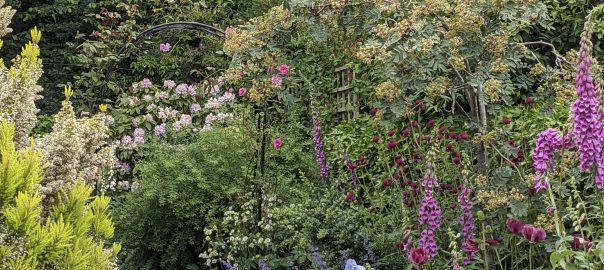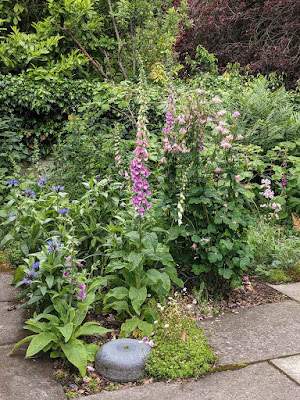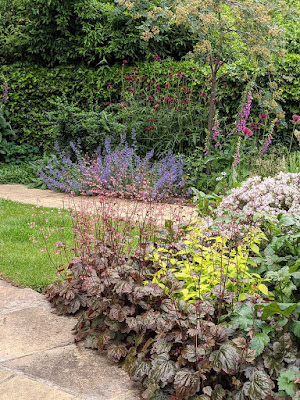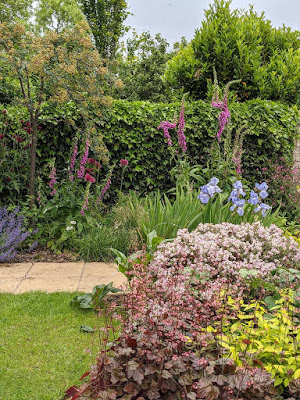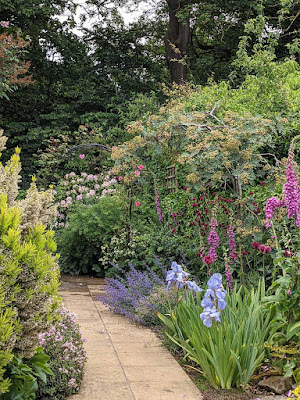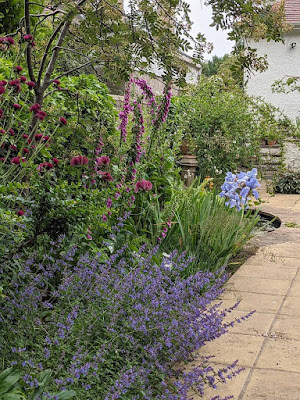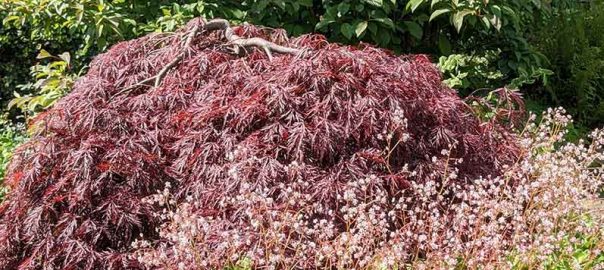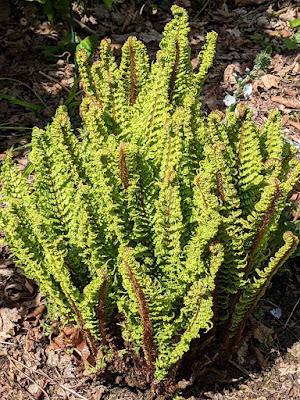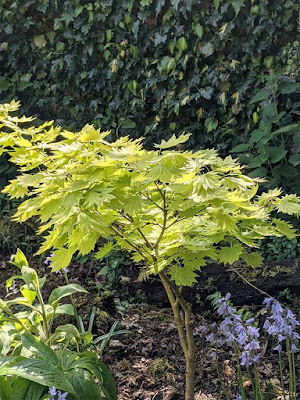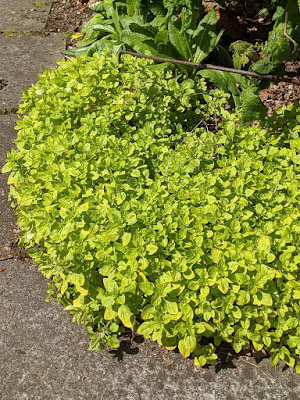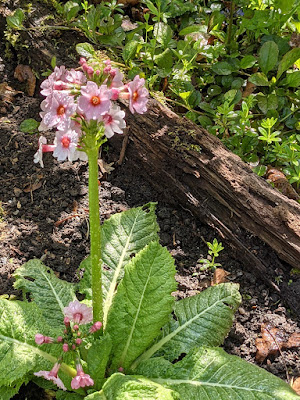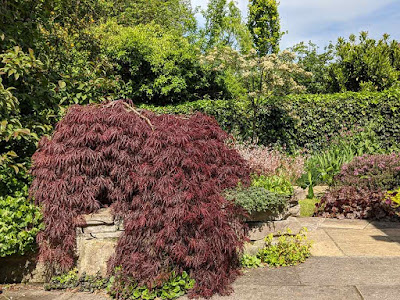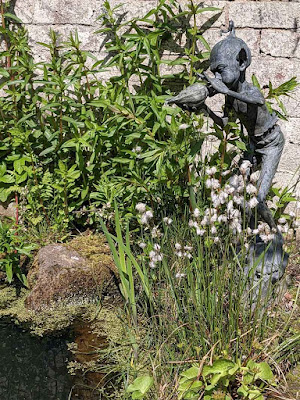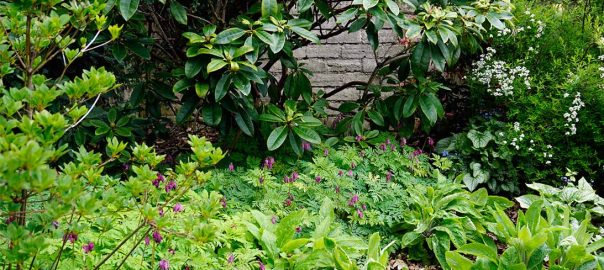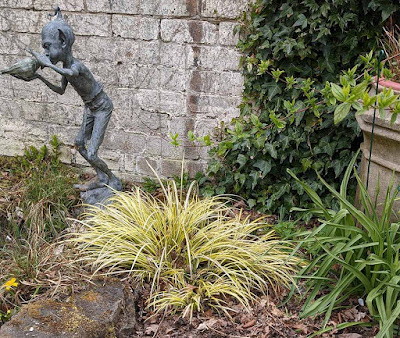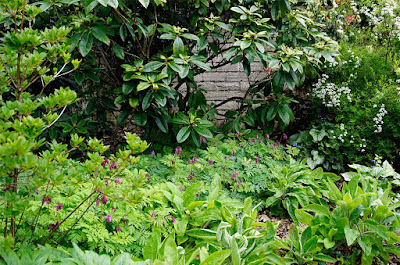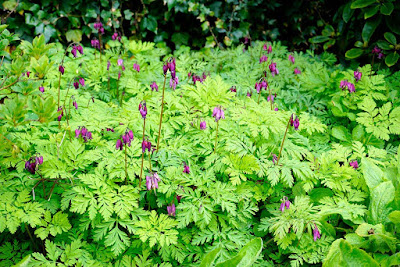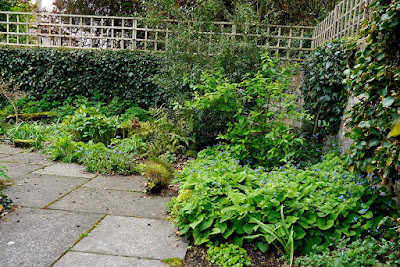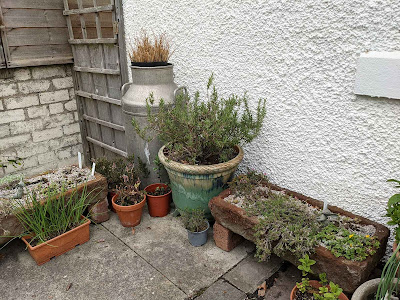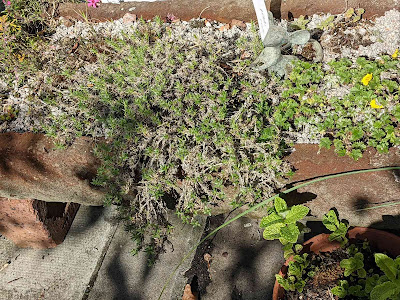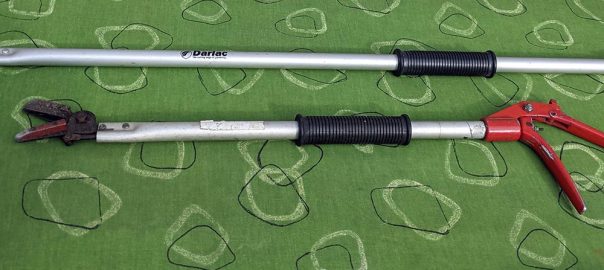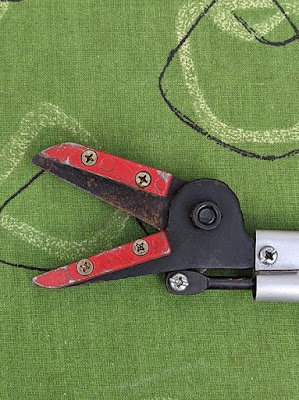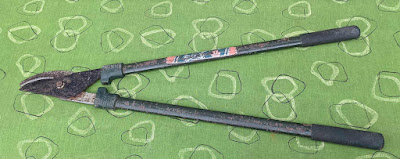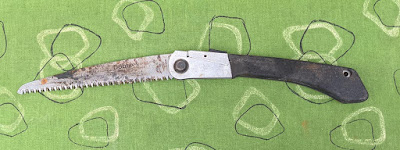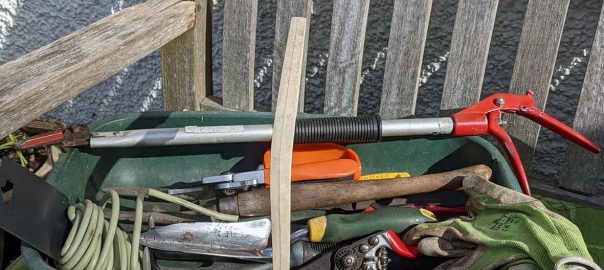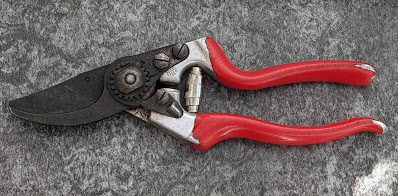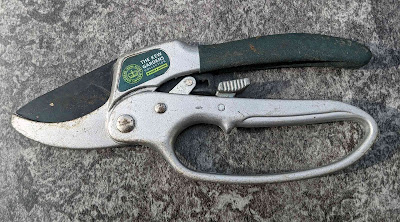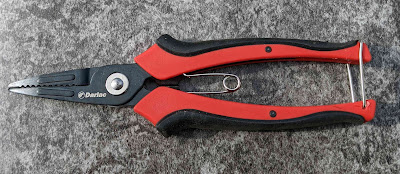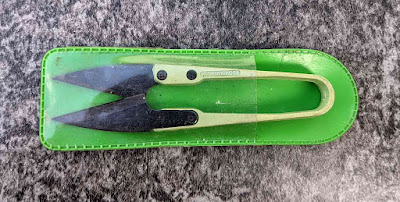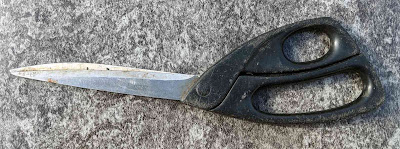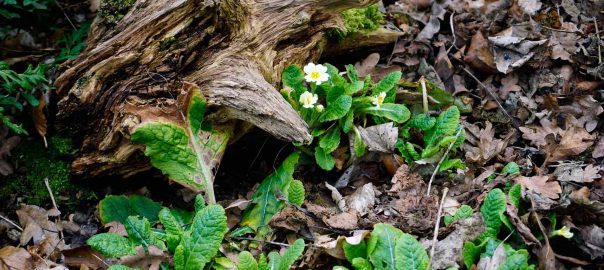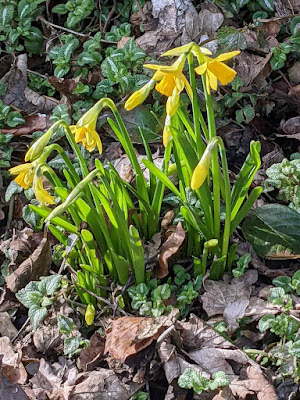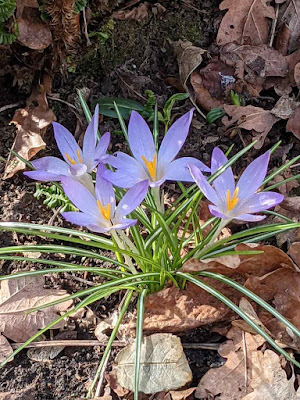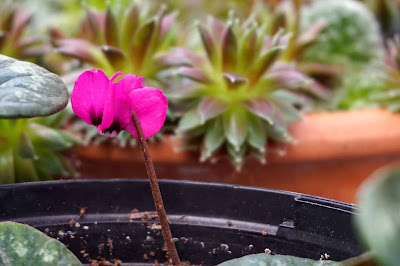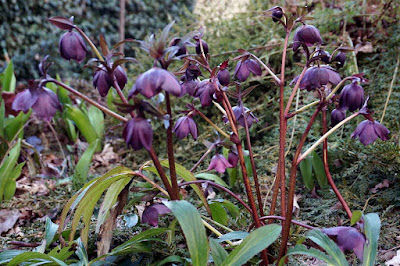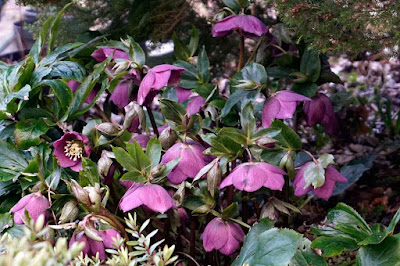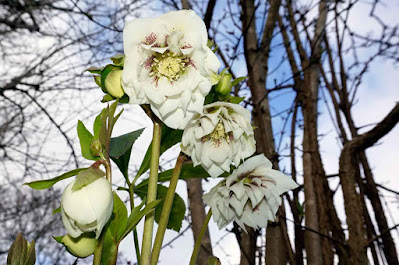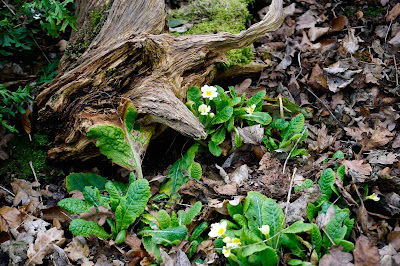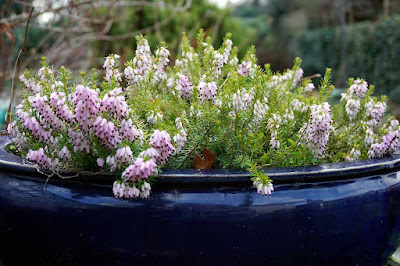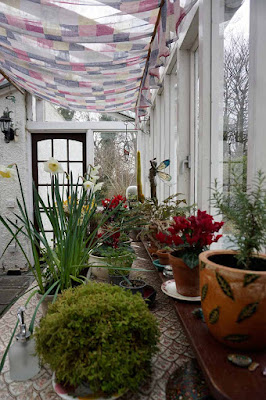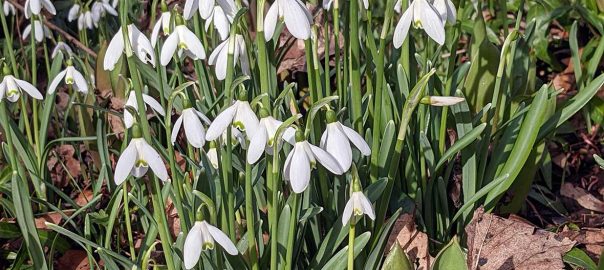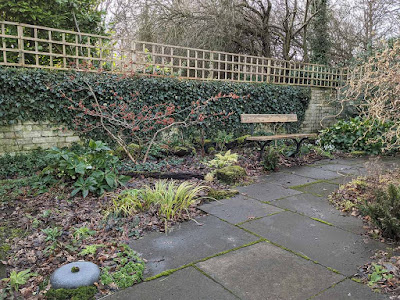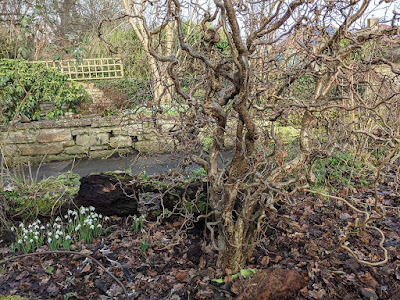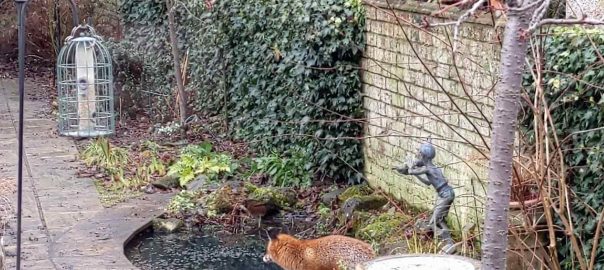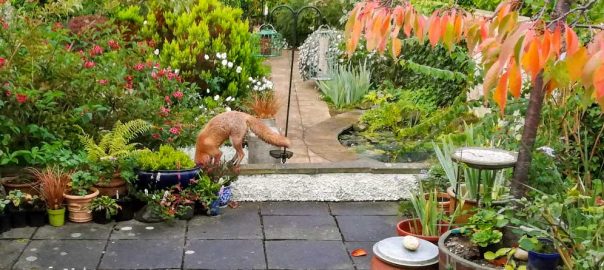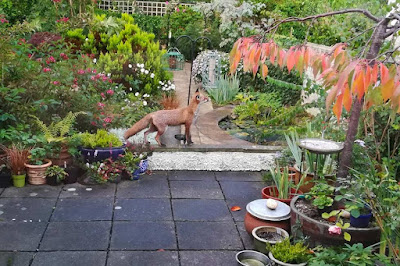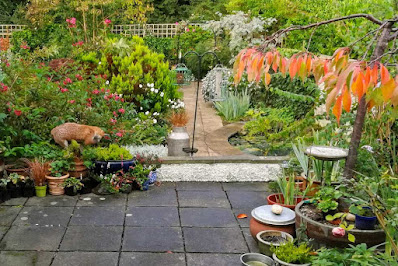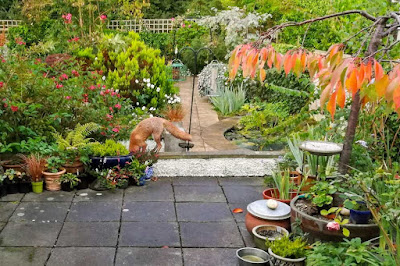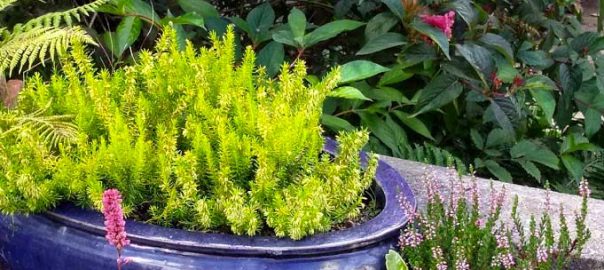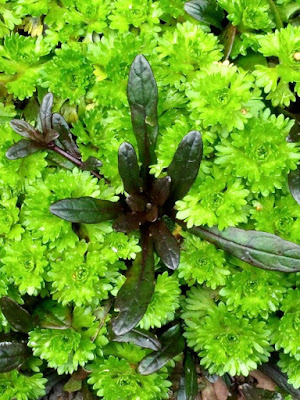As always we must start by mentioning the weather. We started with the sunshine and warmth, then the torrential rain and thunder, and now back to sunshine and warmth. These photographs were taken before the rain except the philadlephus, it was looking fabulous, as were the roses, until the rain pelted down taking most of the petals with it. Some of the roses were just a soggy mess and had to chopped as they would have just rotted instead of opening. Some of the old trellis was still up, but Harry has taken it all down now and it make s a big difference. The neighbours’ and golf course’ trees all blend into our ivy clad walls now.
By the pond I spotted a couple of damselflies and the blue tailed one came into the conservatory. I am afraid the photos are not great (taken at speed with my phone camera).
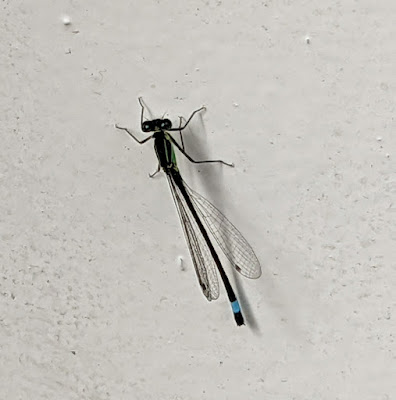 |
| Ischnura elegans (blue tailed damselfly) |
The large red damselfly was just flitting about on the leaves of the marsh marigold.
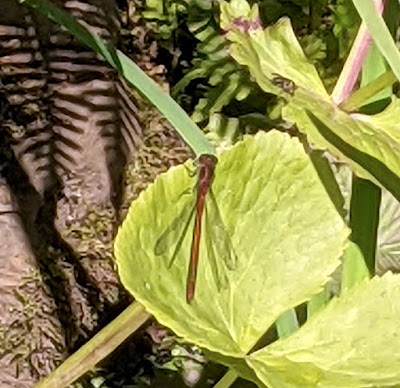 |
| Pyrrhosoma nymphula (large red damselfly) |
The surface of the pond is mostly covered with floating duckweed and pond pants but I try to keep an area clear so the sun can get through to the oxygenating plants below. The area covered by floating plants has also been covered by hundreds of semaphore flies. The males flash their wings, which have a white tips, to entice a female and this resembles semaphore signals. They have gorgeous bronze and mellatic green colourations.
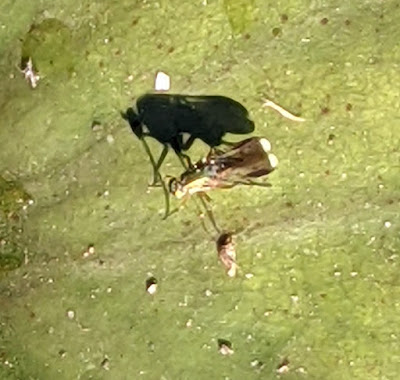 |
| Poecilobothrus nobiltatus (semaphore fly) |
Also in the pond are some very fast water crickets. I think these are the nymphs as the adults have red line down the abdomen. They have white markings that to me look like a face. They flit about on the water surface of the pond.
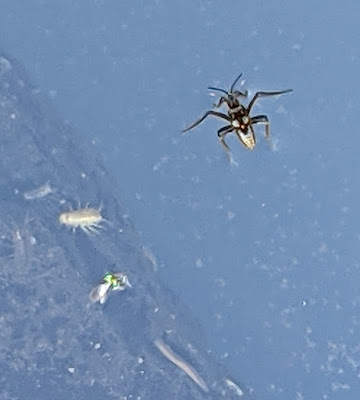 |
| Velia caprai (water cricket) |
A new fungus has appeared this year. At first I though it was another puff ball or earth ball but as it grew – it changed shape. I think this is a stinkhorn. The cap is covered in something called a gleba which contains the spores. It emits a smell that attracts flies which then get covered in the spores.It disappeared as quickly as it appeared.
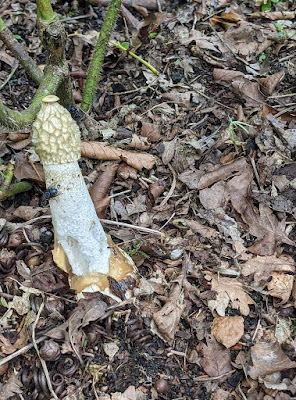 |
| Phallus impudicus (stinkhorn mushroom) |
Now just a few snapshots of the garden before the rain just taken at different angles.
The yellow irises did well out in the front garden. I don’t actually know the name of them, mum was splitting hers so she gave me some.
 |
| Yellow iris front garden |
And after the rain I am afraid the nepeta was flattened, the roses all drooped and lost a lot of petals, lots of the foxgloves keeled over with the weight of the rain, and the poor philadelphus that was just looking and smelling gorgeous lost lots of petals too.
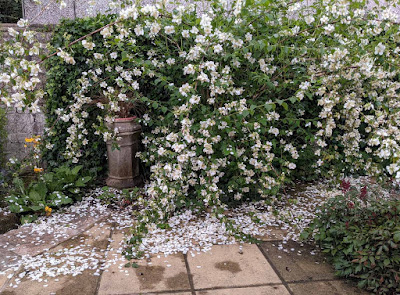 |
| Philadelphus losing it’s petals after the rain |
Once the rest of the foxgloves go over I will have some bare areas to put some new plants in. They are waiting in their pots on the patio until then.
Our dog had his first dip in the pond this week (by accident) and he didn’t think much of it, so he then had a zoomie around the garden then dug 3 holes! Also, a neighbours cat fell into the pond this morning. I was watering the plants on the patio when I hear a big plop and splash. I looked up and saw a very wet, bedraggled, black and white cat slinking off down the garden.
The forecast for the next few days is lots of sunshine a high temperatures so that will mean I have lots more watering to do.
